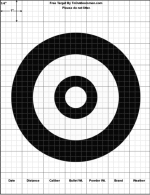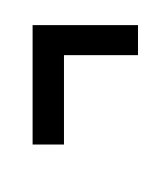Runs With Fire
New member
I'm designing a printable target for people who visit my website and YouTube channel. It's going to part of my marksmanship challenge. Here's how it works: you print the target, shoot 10 shots at the prescribed distance ( different for irons and scopes) and have a buddy vouch for you. Then send a picture of your target and you holding the rifle to me to get your photo with an honorable mention on the channel or website. It's meant for beginner shooters to share their progress.
So I'm looking for an easy scoring, easy to see, and low ink target. I'm thinking either a 1-inch, black bullseye dot with nothing else, or a 3-inch dot with a faint 1-inch white ring inside. My idea was to require 1 inch groups at 25 yards for irons, and 1 inch groups at 50 yards for scopes. I'm more wondering if a 1 inch solid bullseye will be hard for some eyes to see at 50 yards. What target design would you recommend?
What do you folks think?
So I'm looking for an easy scoring, easy to see, and low ink target. I'm thinking either a 1-inch, black bullseye dot with nothing else, or a 3-inch dot with a faint 1-inch white ring inside. My idea was to require 1 inch groups at 25 yards for irons, and 1 inch groups at 50 yards for scopes. I'm more wondering if a 1 inch solid bullseye will be hard for some eyes to see at 50 yards. What target design would you recommend?
What do you folks think?


